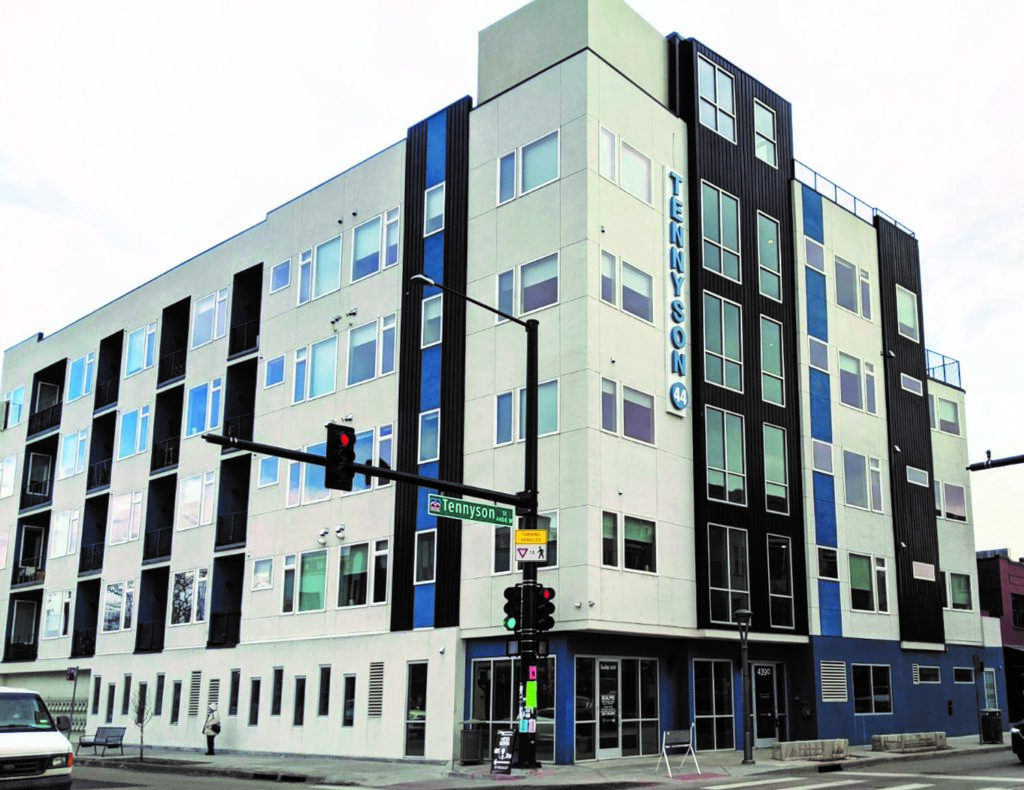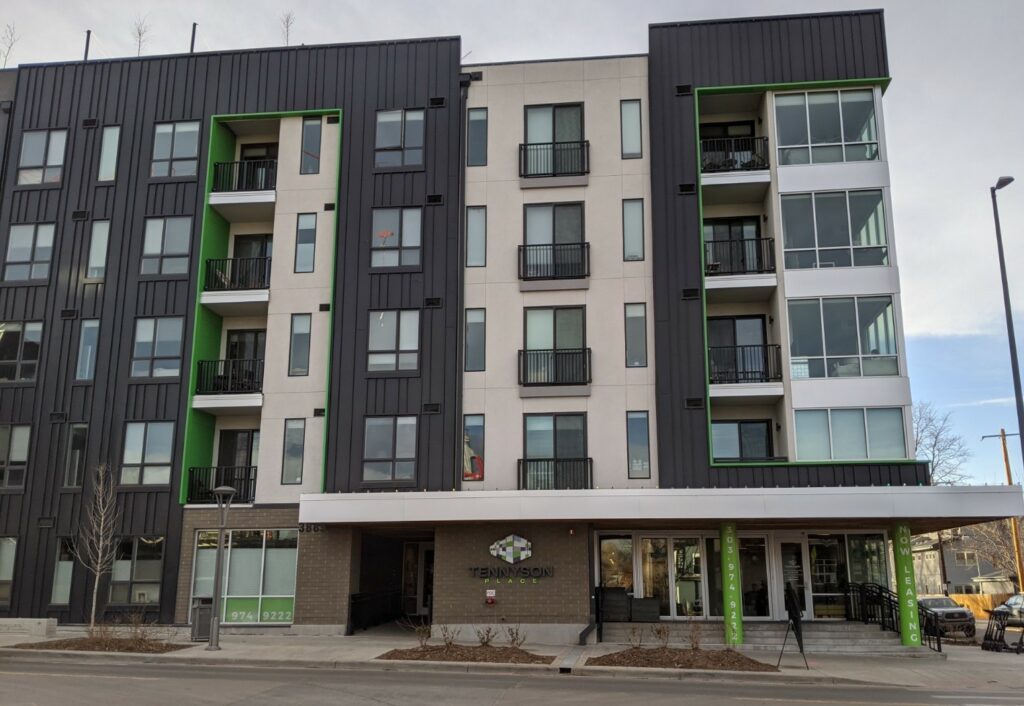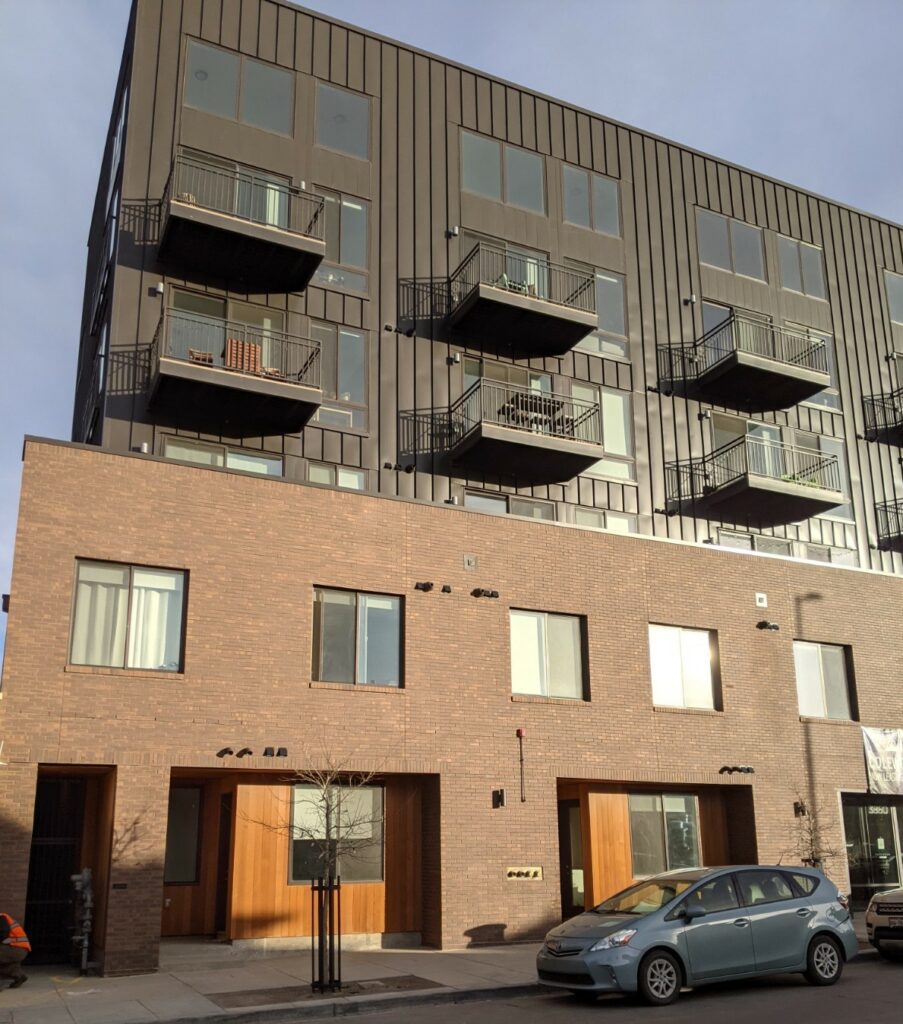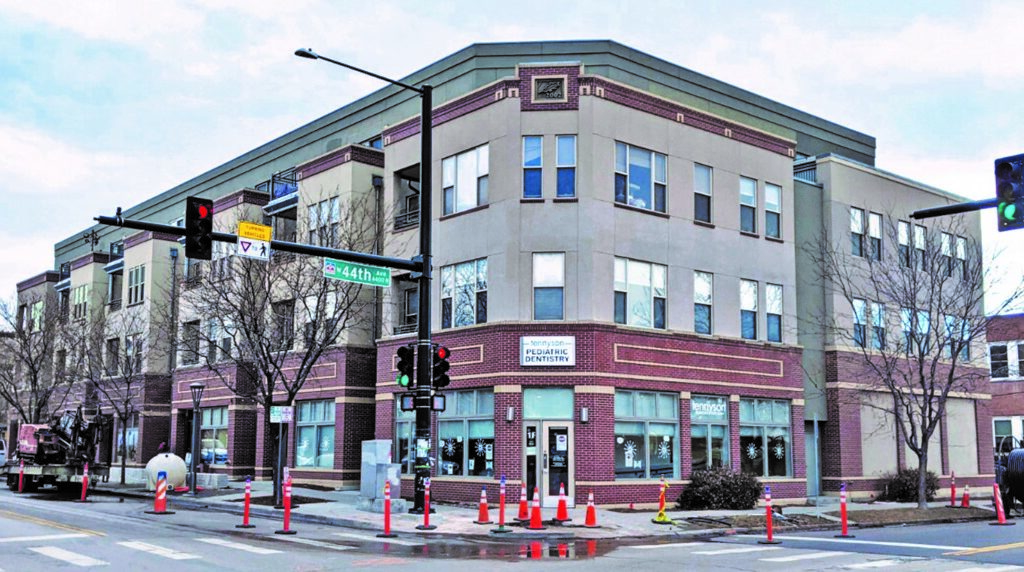A proposal eight years in the making, Councilwoman Amanda Sandoval’s office is hoping to enact a measure they believe will preserve retail and other commercial corridors, promote mixed use (commercial and residential) development, and ensure a more pleasant experience for residents walking through small business areas like Tennyson St, Lowell North of I-70, and portions of 44th Ave. While the Berkeley neighborhood is the first area proposed, the expectation is that it will likely be replicated elsewhere. Dubbed the “Active Centers and Corridors Design Overlay,” it would limit residential uses on the ground floor near the street. Design Overlays don’t replace existing zoning but add additional requirements on new development. We talked with District 1 Planner Naomi Grunditz in Sandoval’s office to explain why they are introducing the overlay and how it would work.
“Long-standing main streets like Tennyson have experienced a loss of commercial space to new development that is 100% residential,” said Grunditz. “This has happened for several reasons. Firstly, there is a huge market demand for housing. Secondly, building 100% residential is less complicated and less risky for developers than building mixed-use developments. Lastly, the Denver zoning code allows buildings in Mixed Use (MX) or Main Street (MS) zones to be 100% residential.”
It’s that last point that the overlay really focuses on, strongly encouraging the mixed part of “mixed use”. The overlay “excludes dwelling units from the first 15 feet of depth along most of the ground floor” on lots 37.5 feet or wider that are zoned for more than two stories. There’s also requirements for windows, setbacks for wider sidewalks, limits on lobbies and other private spaces on the ground floor, and more.
In everyday terms, it means that areas with the design overlay will likely have fewer large apartment buildings that go all the way to the ground floor, and more retail and other commercial businesses with residential spaces stacked on top. The overlay would not ban residential dwellings on the ground floor, however, and residential dwellings that meet additional requirements would still be allowed, including the traditional single family home set back on a property with a porch or other street-facing usable space.
In order to look to the future, the overlay draws inspiration from the past: “This overlay was particularly designed for historic shopping corridors that developed from Denver’s early streetcar network,” explained Grunditz. She said they based a lot of their work on research done by Ryan Keeney published on DenverUrbanism.com. Keeney, then a graduate student mapping streetcar routes, is now a graphic information systems analyst and board member of YIMBY Denver, an organization that describes themselves as “advocates for affordable and abundant housing and people focused transit.”

Need some examples? We looked at four different properties that are three or more stories on Tennyson St. to see if they meet the criteria. Three of them wouldn’t, but the fourth is a near perfect example of what the overlay is intended to promote. None of the three violated current requirements and are completely allowed today and no overlay will force them to change. That’s also not to say these exact buildings couldn’t potentially be built with an overlay, but that if they were built after the overlay goes into effect they would need a different configuration than they have now.
The concept of the overlay was first discussed as far back as 2012 during former Councilwoman Susan Shepherd’s tenure on council according to Heather Noyes, a landscape architect whose firm Studio CPG is on Tennyson St. Noyes helped propose the initial concept and has been an advocate for an overlay; she’s also a former board member of Berkeley Regis United Neighbors (BRUN), who encouraged Sandoval to implement the plan. Noyes noted that when the surrounding streets were adding density through duplexes and townhomes, the argument in favor was that the increased population base would support business on commercial corridors like Tennyson. Now she hopes the retail and other businesses aren’t pushed out.

Through a series of workgroups and community meetings starting in 2014, BRUN identified a number of priorities, including “[encouraging] eyes on the street, neighborly interaction, and a positive pedestrian experience.” Many of the specifics, such as requiring a porch or other usable space on ground floor residential dwellings, came from BRUN’s planning and work on the issue over the years. During that time several proposals were discussed, including separate commercial and residential overlays, a unified overlay, and others. The current proposal affects both residential and commercial properties in commercial corridors but not the surrounding neighborhood.
“Construction has touched every block of our neighborhood in recent years, said Michelle Frankel, an architect and former committee chair with BRUN. “There’s a lot to love about the growth, we have a thriving commercial corridor in Tennyson Street getting national recognition, but we’re seeing developers building without foresight or concern for the neighborhood context. I want to see new development contribute to and not detract from the value of Berkeley/Regis and the many reasons people and businesses have been attracted to come and stay here. I love this neighborhood and hope to be here for many years.”

In April of last year, BRUN officially sent a letter of support for the overlay to Sandoval’s office.
Sandoval, in a presentation to the Denver Planning Board, credits BRUN and the community with the idea. Noting the time it’s taken to reach this point, she explained that she worked on it as a council aide for former Councilman Rafael Espinoza but said that “it never made any progress in the four years he was in office and here we are a year and a couple months after I’ve been elected presenting this to you.”
During her presentation, Sandoval also said, “This is a project that’s near and dear to my heart,” explaining that her father purchased the lot on the southeast corner of 44th and Tennyson in 1975 and ran a small business there. Paul Sandoval eventually sold the property to a developer in 2012 shortly before his death. The new owner built a five-story apartment building; Councilwoman Sandoval has frequently expressed her dislike for the structure. During her time as an aide to Councilman Rafael Espinoza, both Espinoza and Sandoval actively worked to stop its construction. Many of the design elements in that building are explicitly banned in the overlay and if that building was proposed post-overly it would not be allowed (see examples).

The Denver North Star reached out to several organizations who represent commercial property and business owners; most responded that they were studying the issue or hadn’t taken a position but encouraged more public discussion with both residents and business owners as the process continues.
The next step for the proposal is a formal review by the planning board on January 20, where it may encounter critique based on the informal presentation back in October. Don Elliot, a member of the board, expressed concern that increasing the supply of commercial space doesn’t necessarily mean there’s demand to meet it. “You can’t make people buy Starbucks by having more Starbucks stores,” said Elliot, adding “The curve of the economy is moving, speaking bluntly, against more active ground floor uses.”
Fellow planning board member, professional architect, and North Denver resident Gosia Kung echoed some of his concerns. “It’s getting increasingly harder and harder to develop these mixed use properties, especially on small lots.” Kung said she wants to look at regulatory barriers and ways to incentivize more businesses.
Grunditz acknowledges the concerns, responding “when commercial is forced into a place it doesn’t belong, it will fail,” but believes the areas they have targeted are the right places for an overlay of this kind and that increasing supply is important to keep small businesses in Denver. “Corridors like Tennyson are doing well and have characteristics that help them thrive…Many businesses that are forced to or choose to move, and leave storefronts vacant, are doing so because rent has increased or the building was sold, not because their businesses are failing. We have heard this over and over again from our business owners in these areas.”
She sums up her argument noting that land is a limited resource. “In the end, it won’t matter how much economic or policy support happens if there isn’t physical space for businesses to be located. Once a property redevelops with a residential floor plan on the ground floor, that’s the building you’re stuck with for the next 20-40 years.”
One widely discussed development is the former Local 46 bar and adjacent properties, sparking discussion in the community about whether an overlay would change the future of the block. That sale, however, is not going through, but not because of the proposed overlay, according to the company that was considering the purchase. Scott Menefee, Senior Development Director for Holland Partner Group, explained their decision in a statement to The Denver North Star:
“After a lot of internal analysis, Holland Partner Group decided to not move forward with the Tennyson project and withdraw our plans from the City. The proposed street level active use overlay from Councilwoman Sandoval’s office did not factor into this decision and our intent was always to comply with the retail requirements of the design overlay. Holland respects the passion and focus for quality development along Tennyson Street and wish the land seller, neighborhood, and community the very best.”
While most of the conversation is focused on Tennyson St, it’s important to note that the proposed overlay includes five other areas including three of the four corners at 44th and Lowell, which was “the topic of much debate” according to Grundtiz, noting that two story development is not as attractive for redevelopment, but explaining “we wanted to respect that the community is very concerned about preserving this commercial corner.” The corner with Safeway was not included. If ever redeveloped, it’s a large enough property that she feels it needs special attention.
For more information, including any updates to the map of all areas currently proposed as part of the overlay, visit https://mailchi.mp/mailchimp/activecentersoverlay. Public notice signs are currently posted in the neighborhood. Grunditz wanted to mention that while the number 8 appears on them, the proposal is not to increase zoning to allow eight story buildings, but because it’s the eighth overlay if approved; their office has received several questions on the matter. The proposal will go through several committees before potentially reaching a full council hearing, possibly in February or March.


Be the first to comment